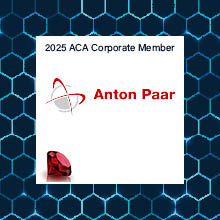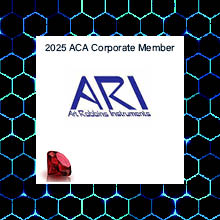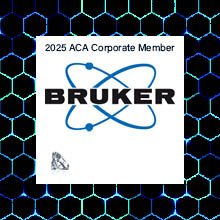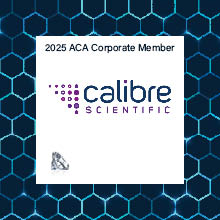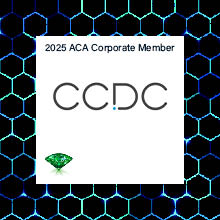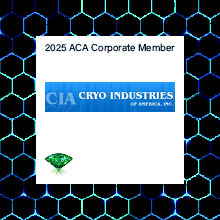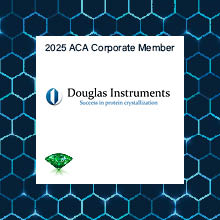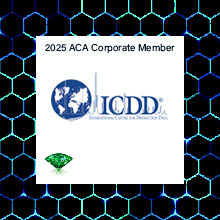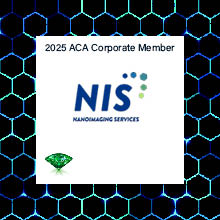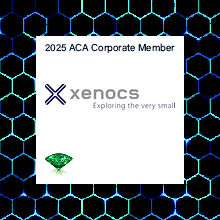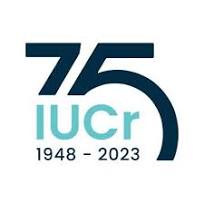- Home
- About ACA
- Publications & Resources
- Programs
- Annual Meeting
- Membership
- -History-
- ACA Video Library
Bylaws & RulesThe ACA is committed to transparency, integrity, and effective governance is reflected in our meticulously crafted bylaws and rules. These foundational documents serve as the organizational compass, guiding our mission-driven initiatives and ensuring the responsible stewardship of our resources. Developed with the input and consensus of our dedicated board members, volunteers, and stakeholders, our bylaws provide a comprehensive framework that outlines the structure of our nonprofit, the rights and responsibilities of our members, and the procedures for decision-making. Rooted in principles of accountability and inclusivity, these bylaws are designed to foster a culture of collaboration, innovation, and social impact. As we strive to make a meaningful difference in our community, these rules not only govern our operations but also embody our unwavering commitment to making a positive and lasting impact.
By-Laws of the American Crystallographic Association, Inc.[November 1, 1970, with amendments and changes approved November, 1992, July 1995, December 1999, December 2003, July 2013, May 2014, November 2018] PREFACE The by-laws of this corporation are in the form of a Constitution and the Rules as herein set forth. CONSTITUTION ARTICLE I: Name and Office Section 1. The name of the corporation shall be American Crystallographic Association, Inc. (herein, “the Association”), which may be referred to by the acronym ACA. It is the successor to American Crystallographic Association, an unincorporated association. Section 2. The principal office of the Association shall be located at PO Box 96 Ellicott Station, Buffalo, New York 14205. All communications intended to be directed to the Association shall be addressed to the above address. Section 3. American Crystallographic Association, Incorporated, is considered to be a continuation of the unincorporated American Crystallographic Association in membership and in the tenure of officers, of committee members, and of representatives to other bodies. All assets and liabilities of the unincorporated association are carried over in the corporation.
ARTICLE II: Object Section 1. The object of this Association shall be to promote the study of the arrangement of the atoms in matter, its causes, its nature and its consequences, and of the tools and methods used in such studies.
ARTICLE III: Membership Section 1. Any person actively interested in the purposes of the Association, whose application is approved by ACA Council or its designee, may become a member by payment to the Treasurer of such dues are specified in the Rules. All members are entitled to voting privileges. Section 2. Any company, corporation or other organization may, with the approval of the Council, become a Corporate Member, on payment to the Treasurer of such dues as specified in the Rules. Each Corporate Member may empower one individual to vote in its behalf in any of the deliberations of the Association. Such an individual shall have one vote. Section 3. Such groups as are approved by the Council may become Affiliated Groups of the Association.
ARTICLE IV: Regional Associate of the International Union of Crystallography Section 1. By agreement with the International Union of Crystallography (herein, “the IUCr”) the Association is a Regional Associate of the IUCr. Section 2. Members resident in any country or group of countries recognized by the Association and the IUCr as forming part of the Region may constitute themselves into a National Division following the procedures given in the Rules. All members resident in a country or group of countries so constituted shall be members of that National Division.
ARTICLE V: Officers Section 1. The officers of the Association shall be a President, Vice President, a Secretary and a Treasurer: these four, plus the President for the previous year and one Representative elected by each National Division, shall be members of the Council which shall have general charge of the affairs of the Association. Additional members may be added to the Council as provided under Article VII. The IUCr may send a non-voting observer to meetings of the Council. Section 2. The President and Vice President shall each serve as such for one calendar year. The Vice President elected for one calendar year shall automatically become President the next succeeding calendar year. Having served as Vice Pres-ident and President, a person is ineligible for re-election to the Vice Presidency. The former Presidents of any predecessor society who have served a full term shall be ineligible for election as Vice President of this Association. The terms of office of the Secretary and Treasurer shall each be three years. The Treasurer shall be elected in the year following the Secretary. The Treasurer shall take office at the beginning of the Association’s next financial year. All other officers and members of the Council shall take office on January 1 following their election. Representatives of the National Divisions shall each hold office for three years and shall not be eligible for re-election in the following term. Section 3. Except where an incumbent Treasurer or Secretary is being re-nominated, two nominations shall be made for each office for which elections are to be held. Nominations for all offices except the Representatives of the National Divisions shall be made by the Nominating Committee. The Nominating Committee comprises the Past President, a new member appointed by the current President, and one former member of the committee. The Chair shall have been a member of the Nominating Committee the previous year. No member shall serve more than two years. Additional nominations for any office may be made by a petition signed by five or more Association members. Nominations for the Representatives of National Divisions may only be made by members of their respective Division. The current President shall constitute this Committee no later than September 1 of the year of his/her term. A Call for Nominations should be placed in the Winter issue of ACA RefleXions. As a courtesy, the names of the nominees should be sub-mitted to Council a month before the slate of candidates is required. Section 4. The election of officers shall be by closed ballots solicited from the whole membership and shall be determined by a majority of those voting. In case no contestant receives a majority, a re-vote shall be taken on the contestants ranking first and second in each successive ballot until one receives a majority; if there is a tie for first rank, the re-vote shall be limited to those tied contestants; if there is a tie for second rank, the re-vote shall be among the first-ranking contestant and those tied for second rank. The election of Representatives of National Divisions shall follow the same procedures as for the election of officers except that the ballots shall only be solicited from members of the respective National Division. Section 5. In the event that the office of President shall become vacant, the Vice President shall succeed to the Presidency for the remainder of the unexpired term and will succeed in the following term in accordance with the provisions of Section 2 of this Article. If any other vacancy occurs in the Council, the remaining members of the Council shall appoint a member of the Association to fill the office for the duration of the unexpired term.
ARTICLE VI: Duties of the Officers and Council Section 1. The duties of the Officers and Council of the Association shall be as follows: 1. The President a. To have general administrative charge of the affairs of the Association. b. To preside over all meetings of the Council. c. To preside over all business meetings of the Association. d. To appoint organizers of the scientific meetings of the Association. e. To have such other duties as are specifically enumerated in the By-laws of the Association. f. To be a member, ex-officio, of all committees, except the Nominating Committee. g. To appoint or nominate representatives of the Association. 2. The Vice President a. To act in place of the President when the President is not present or is unable to discharge the duties as specified in Section 1 of this Article. 3. The Secretary a. To keep minutes of all meetings. b. To review membership files. c. To attend to correspondence and notices of the Association. d. To keep a dossier of precedents and procedures, and to inform Council Members, Committee Chairs, and Meeting and Program Chairs of such precedents. e. To be a member, ex-officio, of all committees, except the Nominating Committee. 4. The Treasurer a. Maintain a working knowledge of all fiscal affairs and commitments of the Association. b. Attend meetings of the AIP Committee of Society Treasurers and meetings of the USNC/Cr as an official representative of ACA. c. Work with ACA staff members for day-to-day operations. d. Attend Financial Review Committee meetings. e. Review monthly account reports. f. Present Financial Report at annual Business Meeting. g. Use results from Continuing Education Committee’s review of annual Travel Grant Applications to determine the grant amounts. 5. The Council a. To have general charge of the affairs of the Association, determining all policies and procedures not otherwise specified in the Constitution and Rules of the Association. b. To consider and act upon reports of Standing Committees. c. To make an annual budget and authorize a member or members to approve expenditures under each item of the budget. d. To act as Trustees of all funds and properties of the Association. e. To assume such other duties as are specified in the Constitution and Rules of the Association. f. To serve as appropriate as the Association’s nominees to national committees for crystallography. g. To appoint such persons, paid or unpaid, as it deems necessary to assist in the efficient running of the Association, with such appointments to be reviewed periodically and in any case not less than once every three years. Appointments currently include Chief Executive Officer and Chief Financial Officer.
ARTICLE VII: Additional Members of the Council Section 1. Members of the Council other than those listed in Article IV, Section 1, of the Constitution may be added by the same procedure followed for an amendment to the Rules.
ARTICLE VIII: Amendments Section 1. An amendment to or an annulment of the whole or any part of this Constitution may be formally proposed by the Council. Council shall circulate the proposal to the whole membership not less than one month before a duly announced business meeting held in conjunction with a scientific meeting of the Association, at which meeting the amendment or annulment will be discussed. It shall then be presented to the whole membership for approval following the procedures described in the Rules. An affirmative vote of at least two thirds of those voting is necessary for the adoption of the amendment or annulment. Section 2. An amendment to or an annulment of the whole or any part of this Constitution may be formally proposed by any member at a duly announced business meeting held in conjunction with a scientific meeting of the Association, at which meeting it will be discussed and voted on. If approved by a majority of those present, the amendment or annulment shall be presented to the whole membership for approval following the procedures described in the Rules. An affirmative vote of at least two thirds of those voting is necessary for the adoption of the amendment or annulment.
ARTICLE IX Section 1. Unless otherwise required by law, in the event of dissolution of this Association the assets shall be distributed only to a recipient that would qualify as an organization with tax-exempt status as described in Section 501 (c)(3) of the United States Internal Revenue Code of 1964, or any amended or successor section thereto.
ARTICLE X: Procedures Not Otherwise Covered Section 1. The rules contained in Robert’s Rules of Order Revised shall govern the Association in all cases to which they are applicable, except as otherwise provided by law, the Certificate of Incorporation, or these By-laws.
Rules of the American Crystallographic Association, Inc.[November 1, 1970, with amendments and changes approved November 2018 and November 2023] Section 1. Annual membership dues shall be $145. Dues for students shall be $30, dues for post-doctoral and retired members shall be $50. Dues for corporate members range from $900 to $2,200. Section 2. Bills for annual membership dues shall be mailed before October 30 preceding the year to which they apply, re-questing payment to arrive not later than December 1. Second bills shall be mailed before the following March 1. Members whose dues are not paid will be kept on the membership list for one year. During the new annual billing cycle such members will receive bills for the unpaid dues of the current year plus dues for the following year. Members still in arrears on January 1 of this second annual billing cycle will be dropped from the membership list. Section 3. Members desiring to terminate their membership in good standing shall submit resignations to the ACA Headquarters. Section 4. Memberships shall begin on the day and month of which the application is processed and will end on December 31st of that year. Section 5. All of the publications of the Association issued during any calendar year for free distribution to the members shall be mailed to each member of the Association who pays dues for that year insofar as copies of the publications are still in print at the time of payment, unless they elect not to receive them. Section 6. Annual dues may be waived by vote of Council for a member or a former member who resigned in good standing who notifies the Treasurer in writing of current unemployment. A former member whose membership was terminated not in good standing may, by vote of Council, be reinstated with dues in arrears waived if the former member notifies the Treasurer in writing that failure to pay dues was the result of unemployment. A separate notification and a new vote of Council must be made for each sub-sequent year for which dues are to be waived. A member whose dues are so waived shall retain all the rights of membership. Section 7. A member who has retired from regular employment will be classed as a retired member upon notifying the ACA on retirement. The dues for a retired member shall be $50. A retired member shall retain all the rights of membership.
RULE II: Meetings Section 1. Meetings shall be held at such times and places as designated by the Council. Notices of all meetings of the Association shall be mailed to the membership a reasonable time in advance. Section 2. A business meeting shall be held at least once a year in connection with the scientific meeting of the Association. Due notice of this meeting shall be given to the membership. Section 3. At all meetings of members for the transaction of business, a quorum shall consist of one-third of the members or fifty members, whichever shall be less, present in person or represented by proxy, except as otherwise provided by law. Section 4. All questions that must be referred to the whole membership, including election of officers and amendment of the Constitution, shall be decided by closed ballot at a meeting that is called for this purpose by an announcement and accompanying ballot-and-proxy form mailed to all members not less than six weeks prior to that meeting. The ballot-and-proxy form shall constitute a proxy when executed and returned by a member who will not attend the meeting in person, and it shall appoint the Secretary (or designated alternate) as the member’s proxy to attend the meeting and to vote the ballot as the member has indicated thereon. Ballots shall be opened and counted at the meeting. Section 5. Any business meeting not held in conjunction with a scientific meeting shall be limited to the business specified in the proxy that shall have been mailed to all members prior to that meeting. Section 6. If a re-vote is necessary as provided in Article V, Section 4, of the Constitution, then, whether or not those present in person are sufficient in number to constitute a quorum, the meeting must be recessed to a later time to allow announcements and new ballot-and-proxy forms to be sent out to the whole membership and returned in the interim.
RULE III: Committees Section 1. The committees of the Association shall be: (a) the Nominating Committee, (b) Standing Committees and (c) Temporary Committees. Section 2. Standing Committees shall be those whose functions are of a more permanent nature, and shall be listed in the Rules, Section 6 below. These Committees shall report and, if necessary, make recommendations to the Council. While the investigative competence of the Standing Committees is unlimited, they are not to take actions involving the Association funds or prestige, nor use the Association name to solicit funds, nor commit the membership or the officers of the Association to a course of action without the approval of the Council. Section 3. Beginning January 1, 2001, each Standing Committee shall have four members, elected by the membership of the Association by letter ballot from a list of candidates sub-mitted by the Council which may be supplemented by nomination from the general membership, signed by five members. Plurality vote shall constitute election. Members of Standing Committees shall each serve for a period of four years and shall be eligible for re-election but shall not serve for more than eight consecutive years. The chair shall be chosen by the Council from among the elected members. In the case of the formation of a new Standing Committee the initial members shall be elected for two, three and four years. Section 4. In the case of a vacancy on any Standing Committee, the remaining members of the Committee may, with the approval of the President, appoint another member to fill the unexpired term. Section 5. Standing Committees may appoint subcommittees to assist them when necessary. Section 6. The Standing Committees of the Association shall be: a) Communications Committee
b) Continuing Education Committee
c) Meeting Committee
d) DEI Committee
Section 7. All committees whose functions are of a limited nature only shall be classed as Temporary Committees and shall be appointed by the President. Any such Committee shall cease to exist immediately following its final report at a business meeting of the Assn., or at the end of the calendar year in which it is appointed, whichever is sooner, unless another term is specified at the time of the appointment.
RULE IV: National Divisions Section 1. Areas currently authorized to organize as National Divisions are Canada, Latin America and United States of America. Section 2. Any other country or group of countries may apply to Council for permission to organize as a National Division. After consideration of the proposal, Council will submit the proposal as an amendment to the Rules. Section 3. An authorized area may organize as a National Division by adopting by-laws which shall take effect as soon as they are approved by the Council of the Association. In any question of interpretation, the By-laws of the Association shall take precedence over those of the National Division. Section 4. Each National Division is responsible for nominating and electing a National Division Representative to the Council of the Assn. In addition, its activities may include, but are not limited to, organizing meetings of its members. Section 5. Elections for the officers of a National Division shall occur at the same time as the election of the Association’s officers. Section 6. No officer or member of a National Division shall take action involving the Association’s funds or prestige, nor use the Association’s name to solicit funds, nor commit the membership or officers of the Assn. to a course of action without the prior approval of the Council.
RULE V: Scientific Interest Groups Section 1. Scientific Interest Groups may be established by the Council on the petition of a group of members in good standing. Section 2. The activities of a Scientific Interest Group may include, but are not limited to, organizing sessions at the scientific meetings of the Association and organizing business meetings of their members. Section 3. Any member of the Association may become a member of one or more Scientific Interest Groups by notifying the Membership Secretary of the Association. Section 4. Each Scientific Interest Group shall adopt its own by-laws which shall take effect as soon as the by-laws are approved by the Council of the Association. In any question of interpretation, the by-laws of the Association shall take precedence over those of the Scientific Interest Group. Section 5. Scientific Interest Groups shall elect their officers at the same time as the election of the Association’s officers. If the chair of any Scientific Interest Group is unable to act, the President may appoint a replacement to act until the next election. Section 6. No officer or member of a Scientific Interest Group shall take action involving the Association’s funds or prestige, nor use the Association’s name to solicit funds, nor commit the membership or officers of the Association to a course of action without the prior approval of the Council of the Assn.
RULE VI: Election of Officers Section 1. Ballot-and-proxy forms naming the nominees for officers and new members of existing Standing Committees and nominees for officers of Scientific Interest Groups and National Divisions shall be mailed to the membership during September. In order to be included on the ballot, properly qualified nominations from the membership shall be received by the Secretary not later than August 15.
RULE VII: Affiliated Groups of the Association Section 1. Each Affiliated Group (see Constitution, Article III, Section 3) shall appoint a representative and pay an annual membership fee of twice the individual membership dues. The representative shall receive all Association mailings and keep the members of the Affiliated Group informed on Association matters. The regular Association notices shall contain such news of Affiliated Groups as is supplied by their representatives, suitably edited by the Assn. Secretary.
RULE VIII: Amendments Section 1. An amendment to these Rules may be proposed either by the Council or by any member with the approval of a second by some other member. Section 2. These Rules may be amended or suspended by a two-thirds affirmative vote of the members present in person or by proxy at any duly announced meeting of the Association. |



